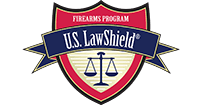In Part 1 of the “Frequently Misused Gun Terms” we went over the top most frequently misused gun terms. But we are not stopping there. There are still a few other terms to add to that list (and probably some more we missed). We’re not trying to be sticklers here but knowledge is power and next to keeping our patrons and fans safe, keeping them informed is our top priority. The following terms may not be misused quite as frequently as the first batch but are important none the less. The following terms and explanations were best phrased and collected by Guns and Ammo.
Cartridge vs. Bullet vs. Caliber
A “bullet” is merely the projectile that exits the barrel. Specifically, it’s a non-spherical chunk of lead, copper or other material intended for use in a rifled barrel. The bullet’s “caliber” is a numerical approximation of the bullet’s diameter, often expressed in millimeters or hundredths of an inch.
“Bullet” should not be used interchangeably with the term “cartridge” — a bullet is a mere component of it. Cartridges consist of the case, primer, propellant and projectile. In the case of rifles and handguns, the bullet is seated in the cartridge case. Cartridge is also an accurate term for any shot-shell.
Pocket Pistol vs. Sub-Compact Pistol
Every sub-compact pistol is a pocket pistol, but not all pocket pistols are subcompacts.
A sub-compact pistol is simply a small, concealed-carry-friendly version of a particular full-size model. (ex:Springfield XD 9mm Subcompact)
“Pocket pistol,” on the other hand, is a generic, somewhat slangy term for any small handgun suitable for concealed carry in a pocket or otherwise. (ex:Ruger LC9)
In most firearms, the extractor hooks onto the head of a chambered cartridge and pulls it rearward as the action is cycled. The extractor alone does not eject the spent casing — that’s the job of the ejector.
In many semi-automatic firearms, the ejector typically looks like a small blade positioned opposite the ejection port. In a nutshell, the extractor pulls the shell rearward until it contacts the ejector, which flings it out the port.
There are exceptions. Some double-barrel shotguns, for instance, are “extractors-only.” They are equipped to slightly extract spent shells from the chamber, easing removal by the shooter’s fingers. Other double-barrel shotguns have ejectors that spring spent shells from the gun — no need for extractors.
Suppressor vs. Silencer
Many firearm experts believe that the term “silencer” has no correct usage — rather, it’s an inaccurate slang term for “suppressor.” Suppressors aren’t silencers, they argue, because they don’t actually “silence” the firearm. Guns that fire silently exist only in Hollywood. Suppressors merely moderate escaping gases, greatly reducing but not eliminating noise.
The NRA Firearms Sourcebook makes the distinction clear, defining a suppressor as “a device attached to the muzzle of a firearm to reduce the noise of discharge. Sometimes incorrectly called a ‘silencer.”
So there you have it, straight from one of the most well researched and reliable sources out there. There will always be some debate on a handful of terms, the proverbial “toe-may-toe, toe-mah-toe” debates. But there are other terms that are down right necessary for the proper handling and care of firearms. And frankly, to avoid sounding like a newbie at the range. If we left something off the list let us know, we are always on the lookout for more pertinent information to share with our audience and we sure as heck don’t want to be “saying it wrong” either!




























Leave a Reply